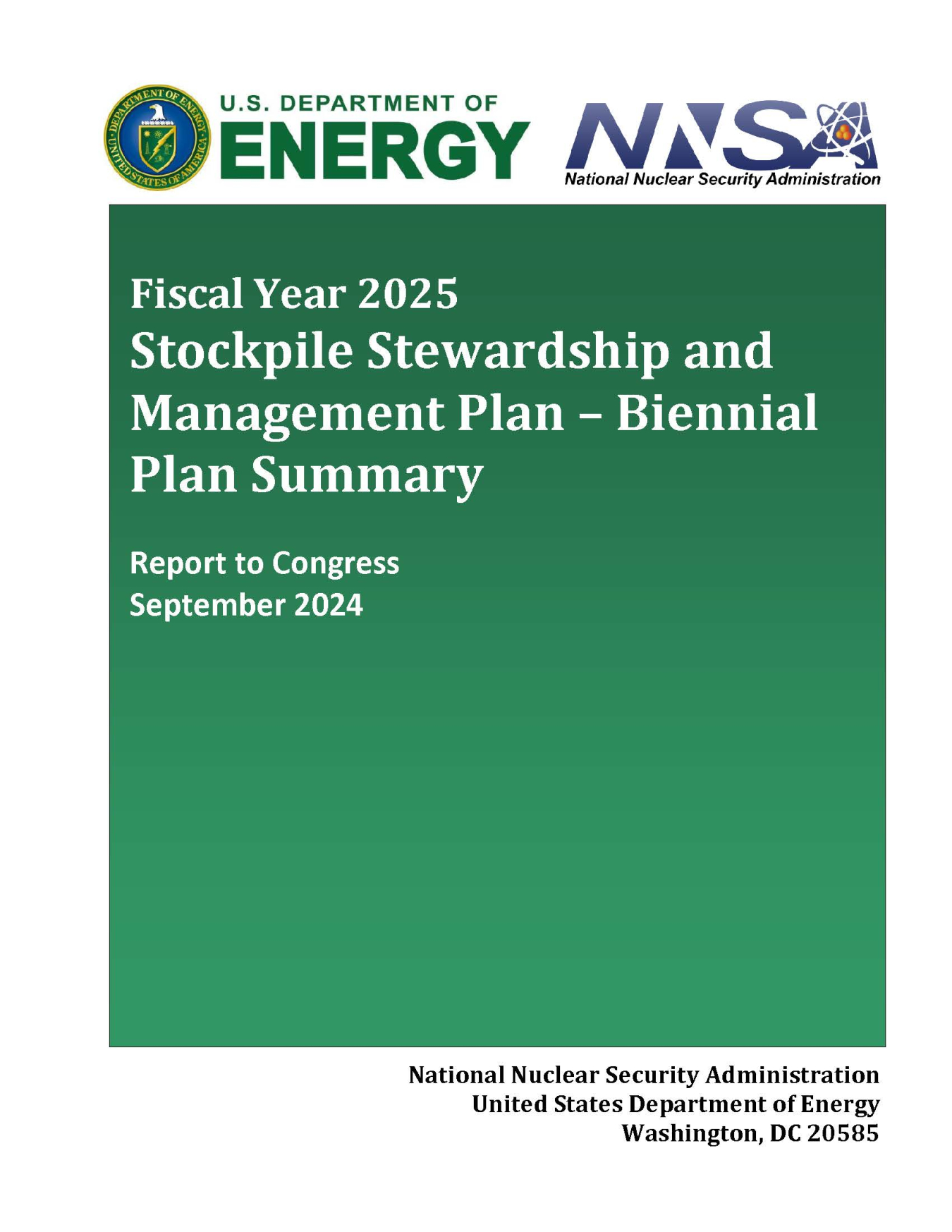NNSA's Stockpile Stewardship and Management Plan is a key planning document for the Nuclear Security Enterprise.
National Nuclear Security Administration
October 3, 2024The U.S. nuclear deterrent is the cornerstone of the Nation’s security, a source of assurance for our allies, and has been an essential contributor to global stability for more than 75 years. The credibility of the nuclear weapons stockpile, demonstrated through the world-class science and engineering capabilities of the nuclear security enterprise, is likewise central to the United States’ strategic posture. Among the highest-priority missions of the Department of Energy’s National Nuclear Security Administration (DOE/NNSA) is to maintain the safety, security, and reliability of the stockpile, a function the men and women of the enterprise have discharged faithfully since the Manhattan Project.
Although the global security landscape is more dynamic today than in recent years, our nuclear deterrent remains effective. This continuity in our posture is a testament to the agility of the nuclear enterprise and the headroom built into the U.S. strategy of deterrence. Nonetheless, evolutions are occurring within the enterprise, both in response to the deteriorating international security environment and in anticipation of developments that may implicate our nuclear posture. These adaptations are layered upon ongoing modernization programs to contend with aging weapons and infrastructure and provide for the enduring performance of the stockpile.

The Fiscal Year 2025 Stockpile Stewardship and Management Plan — Biennial Plan Summary (FY 2025 SSMP) describes how DOE/NNSA will sustain the stockpile without underground nuclear explosive testing across the laboratories, plants, and sites that comprise the nuclear security enterprise. The report outlines plans to fulfill the requirements to produce a minimum of 80 plutonium pits per year; achieve the First Production Units of the W80-4 Life Extension Program (LEP), W87-1 Modification Program, and W93 warhead; maintain production of the B61-12 LEP and W88 Alteration 370 warheads; establish a program of record for the Sea-Launched Cruise Missile-Nuclear; and execute the B61-13 program.
DOE/NNSA’s ability to perform its diverse missions depends on modern, flexible, and resilient facilities and infrastructure capable of servicing the stockpile for the next 50 years or more in the face of disruptions to operations or evolving military needs. In coordination with our Department of Defense partners, we are modernizing the stockpile and our infrastructure simultaneously. Infrastructure investments will support continuous production of nuclear materials, high explosives, and non-nuclear components. In the past year, we met 100 percent modernized warhead delivery to the Nation’s warfighters, but the enterprise’s capacity to deliver in the future depends on successful completion of infrastructure projects.
No less critical to the reliability of the stockpile is the workforce of the nuclear security enterprise—the cadre of scientists, engineers, machinists, craft and trade workers, and program managers whose technical skill is matched only by their dedication to our national security. DOE/NNSA is taking aggressive steps to attract and retain a workforce qualified to maintain today’s deterrent and design the systems of tomorrow.
For more than 75 years, the scientific achievements of the nuclear security enterprise have revolutionized the world by expanding the limits of human knowledge while laying the foundations of national and global security. This proud heritage continues today. From the fusion breakthroughs at the National Ignition Facility to the deployment of El Capitan, the world's fastest supercomputer, the enterprise boasts an extraordinary reservoir of technical talent and creativity. With consistent support from Congress, DOE/NNSA will continue its long tradition of fulfilling the United States’ nuclear deterrence mission, delivering innovative solutions to meet present and future challenges.

